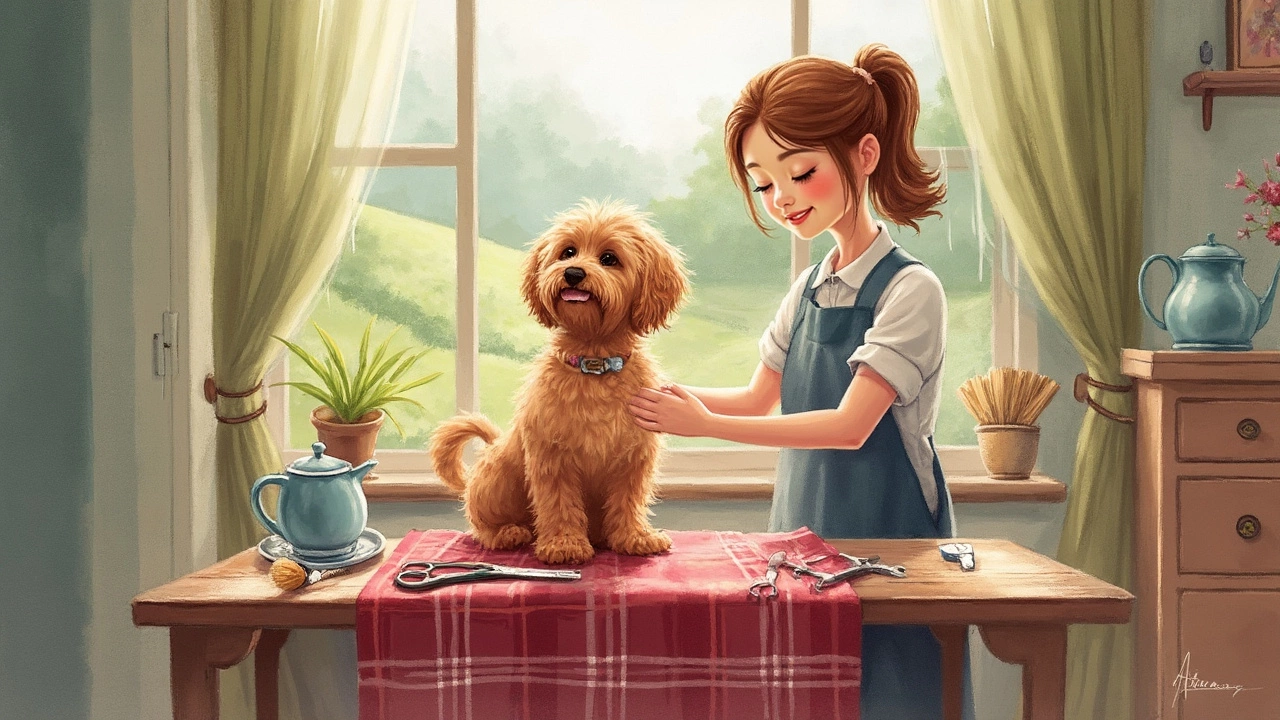Wet vs Dry Dog Hair: What Every Owner Should Know
If you’ve ever wondered why your dog’s coat feels different after a bath, you’re not alone. Wet and dry hair behave in distinct ways, and knowing the basics can save you time, money, and a lot of frustration when you’re grooming.
First off, wet hair is heavier, clumps together, and can hide matting. When you’re drying a pup, the hair can shrink a bit, making it look shorter than it really is. Dry hair, on the other hand, is lighter and more prone to static, which can make it look frizzy if it isn’t cared for properly.
How Wet Hair Affects Your Dog
When a dog’s coat gets wet, the fibers swell. This means they’re more likely to tangle, especially if your dog has a longer or double coat. Running a brush through wet hair can feel like pulling on rope, and it can hurt the skin. The safest move is to use a wide‑tooth comb or a slicker brush gently, starting at the ends and working toward the roots.
Wet hair also loses some of its natural oils. Those oils act like a built‑in conditioner, so after a bath you’ll notice the coat feeling a bit dry until the oils spread again. A quick, low‑heat blow‑dry helps reset the oil distribution without scorching the skin.
Temperature matters, too. Hot water can strip away more oil, while lukewarm water keeps the coat's natural balance. If you’re using a shampoo, choose one that’s pH‑matched for dogs – human shampoos are too harsh and can make wet hair brittle.
Managing Dry Hair and Keeping It Healthy
Dry hair doesn’t have the same swelling effect, so it’s easier to brush and less likely to snag. However, it can become static‑charged, especially in winter or in homes with low humidity. A quick spritz of water or a leave‑in conditioner designed for dogs can calm that static.
Regular brushing is key for dry coats. It removes loose hair, distributes oils, and prevents hot spots. For short‑haired breeds, a rubber grooming glove does the trick; for medium to long coats, a pin brush works best.
Don’t forget about diet. A balanced meal with omega‑3 fatty acids keeps the skin supple and the hair glossy, whether it’s wet or dry. If you notice excessive dryness or flakiness, a supplement or a change in food might be needed.
Lastly, keep an eye on seasonal changes. Summer heat can dry out a coat faster, while spring mud can keep hair moist longer, encouraging matting. Adjust your grooming routine accordingly – more frequent brushing in wet months, and a light conditioning spray in dry months.
Understanding wet vs dry dog hair isn’t rocket science, but it does make grooming smoother and keeps your dog comfortable. Use the right tools, respect the coat’s natural oils, and adjust for the weather. Your pup will thank you with a shiny, happy coat that’s ready for any adventure.
Dog Haircuts: Should You Cut Your Dog's Hair Wet or Dry?
Ever wondered if it's better to cut your dog's hair when it's wet or dry? This article tackles the pros and cons of each method, offering real-world grooming tips to help you decide. You'll find out what professional groomers do, how different coat types react, and what mistakes to avoid. Plus, get time-saving tricks if you're grooming at home. Whether your dog's sporting a curly coat or sleek fur, there are smarter, safer ways to handle trims.
